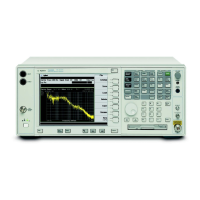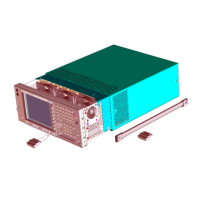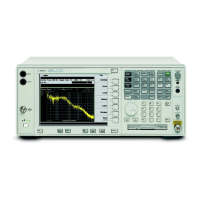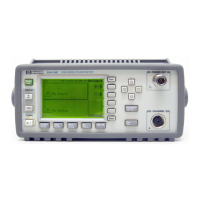Chapter 2 123
Instrument Functions: A - L
File
Instrument Functions: A - L
Example: MMEM:STOR:STAT 1,’C:\mystate.sta’ saves the current instrument
state to the specified file name. The .sta extension is required.
*SAV saves the current instrument state to a file name REGxxx, where xxx
= the register number. The available register numbers are 0 to 127.
MMEM:STOR:SCR ‘C:\myscreen.gif’ The file must have a .gif file
extension. The specified file extension determines which file format the
instrument will use to save the image. Only
Bitmap is available (not Reverse
Bitmap).
MMEM:STOR:TRAC TRACE3,’C:\mytrace.trc’ Saves trace 3 to the trace +
state file C:\MYTRACE.TRC
MMEM:STOR:CORR ANT, ‘A:TEST1.AMP’ saves the current antenna
correction to the specified file name. The .amp extension is required.
MMEM:STOR:LIM LLINE2,’C:mylimit.lim’ saves the current limit line
two data set to the specified file name. The .lim extension is required.
MMEM:STOR:RES ‘A:ACP.CSV’ saves the current ACP measurement
results to the specified file name. The .csv extension is required.
2.6.2.2 Type
Allows you to select the type of data you want to save. The file types available for saving
are described below. See
“File Types” on page 114 and “Type” on page 117 for more
information.
Type Format Source Extension
State State STA
Trace Trace + state Trace 1, 2, 3, or all traces TRC
Comma separated trace values Trace 1, 2, 3, or all traces CSV
Limit Internal data format LIM
Screen Bitmap GIF
Reverse bitmap GIF
Corrections Internal data format ANT, CBL, OTH,
and AMP
Measurement
Results
Comma separated values CSV
